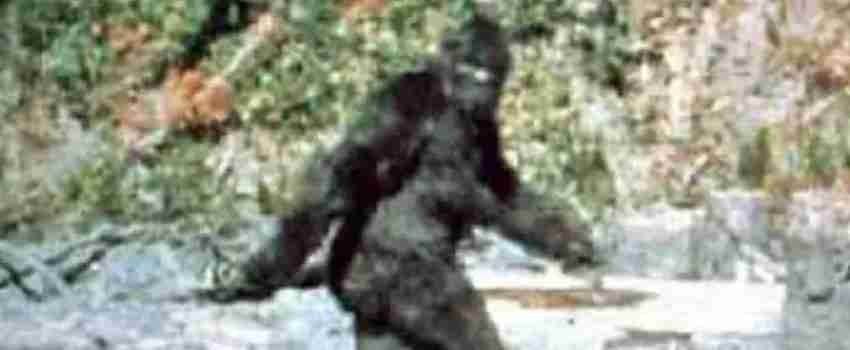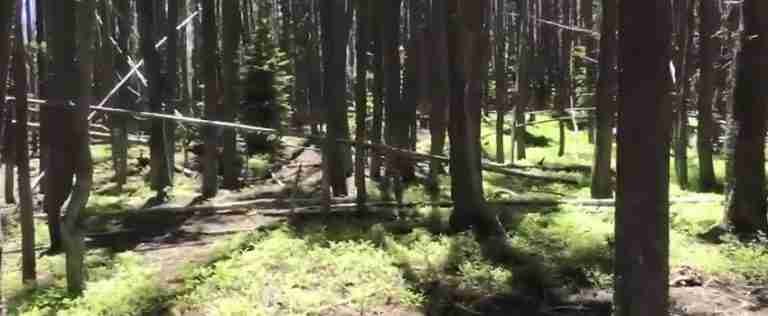Bigfoot and the Patterson-Gimlin Film

Bigfoot, also known as Sasquatch, is a legendary creature believed by some to inhabit forests, mainly in the Pacific Northwest region of North America. The existence of Bigfoot has long been the subject of debate and speculation, with many people claiming to have seen or encountered the creature, but little concrete evidence to support these claims.
One of the most famous pieces of evidence for the existence of Bigfoot is the Patterson-Gimlin film, a short piece of footage shot in 1967 by Roger Patterson and Robert Gimlin in northern California. The film shows a creature, believed by some to be Bigfoot, walking away from the camera in a clearing. The authenticity of the film has been the subject of much controversy and debate over the years, with some people convinced it is genuine evidence of Bigfoot, and others convinced it is a hoax.
In this blog post, we’ll take a closer look at the Patterson-Gimlin film, including its background, the debate surrounding it, and its cultural significance.
The Patterson-Gimlin Film
The Patterson-Gimlin film is a short piece of footage shot in 1967 by Roger Patterson and Robert Gimlin in northern California. According to Patterson and Gimlin, they were riding their horses through the Six Rivers National Forest when they came across a large, hairy creature walking upright in a clearing.
Patterson quickly grabbed his 16mm camera and filmed the creature as it walked away from them, eventually disappearing into the forest. The footage, which lasts for about a minute, shows a creature with a distinctive gait and apparent muscle movement as it moves through the clearing.
Here is the film they took. The controversial footage begins at approximately 2:34:
Patterson and Gimlin claimed that the creature they filmed was a Bigfoot, a legendary creature also known as Sasquatch that is believed by some to inhabit forests in the Pacific Northwest region of North America.
The film quickly gained attention and became a major piece of evidence for the existence of Bigfoot, with many people convinced that it showed a genuine, undiscovered species. However, the film has also been the subject of much skepticism and controversy, with some people arguing that it is a hoax or that it shows a person in a costume.
The Patterson-Gimlin film has been analyzed and debated by researchers and skeptics for decades, and it remains one of the most well-known and controversial pieces of evidence for the existence of Bigfoot.
The Debate Surrounding the Film
The debate surrounding the authenticity of the Patterson-Gimlin film has raged on for decades, with arguments for and against its validity.
One argument in favor of the film’s authenticity is the quality of the footage itself. Some people have argued that the film is too clear and detailed to be a hoax, and that it shows genuine muscle movement and other characteristics that are not easily faked.
Others have pointed to the fact that Patterson and Gimlin had no apparent motive for hoaxing the film, and that there is no evidence that they had the means or expertise to create such a convincing fake.
On the other hand, skeptics have raised a number of arguments against the authenticity of the film. One of the main criticisms is that the footage is too short and inconclusive to provide definitive evidence of Bigfoot’s existence.
Skeptics have also pointed out that the film has never been independently verified, and that there are no other sightings or physical evidence to support its authenticity. Some people have also suggested that the creature in the film could be a person in a costume, or that the film itself could be a staged hoax.
Overall, the debate surrounding the Patterson-Gimlin film is complex and ongoing, with no clear consensus on its authenticity. Some people believe it is genuine evidence of a previously undiscovered species, while others are convinced it is a hoax or a mistake. The debate is likely to continue as long as the film remains the primary piece of evidence for the existence of Bigfoot.
The Patterson-Gimlin Film’s Impact on Popular Culture
Despite the ongoing debate about its authenticity, the Patterson-Gimlin film has had a significant impact on popular culture and public perceptions of Bigfoot.
One of the main ways the film has shaped public perceptions of Bigfoot is by popularizing the idea of the creature and making it a household name. Prior to the film’s release, Bigfoot was relatively unknown outside of a small community of researchers and enthusiasts.
However, the film’s widespread publicity and the media attention it received helped to bring Bigfoot into the mainstream, and it has since become one of the most well-known and recognizable mythical creatures in the world.
The film has also had a lasting impact on popular culture, with references to Bigfoot appearing in numerous movies, TV shows, and other media. It has inspired countless books, articles, and documentaries, and has even spawned its own subculture of enthusiasts and believers.
Overall, the Patterson-Gimlin film has played a significant role in shaping public perceptions of Bigfoot, and it remains a key piece of evidence in the ongoing debate about the creature’s existence.
Conclusion: Bigfoot and the Patterson-Gimlin Film
In summary, the Patterson-Gimlin film is a short piece of footage shot in 1967 by Roger Patterson and Robert Gimlin in northern California. The film shows a creature, believed by some to be Bigfoot, walking away from the camera in a clearing. The authenticity of the film has been the subject of much debate and controversy, with some people convinced it is genuine evidence of a previously undiscovered species, and others convinced it is a hoax or a mistake.
The debate about the film’s authenticity has centered on a number of factors, including the quality of the footage, the credibility of the witnesses, and the possibility of hoaxes. Some people have argued that the film is too clear and detailed to be a hoax, and that it shows genuine muscle movement and other characteristics that are not easily faked.
Others have pointed out that the film is too short and inconclusive to provide definitive evidence of Bigfoot’s existence, and that there is no other evidence to support its authenticity.
Despite the ongoing debate about its authenticity, the Patterson-Gimlin film has had a significant impact on popular culture and public perceptions of Bigfoot. It has helped to popularize the idea of the creature and make it a household name, and has inspired numerous books, articles, and documentaries. It has also played a key role in shaping public perceptions of Bigfoot and remains a key piece of evidence in the ongoing debate about the creature’s existence.
It is ultimately impossible to say for certain whether it is genuine or not. While the footage is intriguing and has certain characteristics that are difficult to explain, there is also a lack of concrete evidence to support its authenticity. Ultimately, the debate about the Patterson-Gimlin film is likely to continue as long as the film remains the primary piece of evidence for the existence of Bigfoot.
Additional Resources
There are many resources available for those interested in learning more about the Patterson-Gimlin film and the debate surrounding its authenticity. Here are a few options:
- The Bigfoot Field Researchers Organization (BFRO) is a non-profit organization dedicated to researching and documenting Bigfoot sightings and other related phenomena. The BFRO website includes a section on the Patterson-Gimlin film, including a detailed analysis of the footage and information on the history and background of the film.
- The Skeptic’s Dictionary is a comprehensive online resource that aims to provide critical analysis of pseudoscientific and supernatural claims. The Skeptic’s Dictionary includes an entry on Bigfoot, which includes a discussion of the Patterson-Gimlin film and the arguments for and against its authenticity.
- Wikipedia is a free online encyclopedia that includes a page on the Patterson-Gimlin film, which provides a summary of the film’s history and background, as well as a discussion of the debate surrounding its authenticity.
- YouTube is home to a wide variety of videos related to the Patterson-Gimlin film, including analyses of the footage, interviews with researchers and witnesses, and documentaries on the subject. A simple search for “Patterson-Gimlin film” will yield a wealth of resources for those interested in learning more about the film.
Overall, these resources can provide a good starting point for those interested in learning more about the Patterson-Gimlin film and the debate surrounding it.

